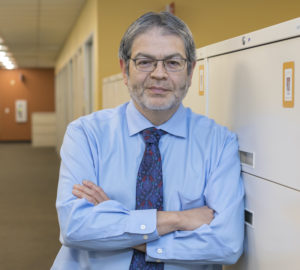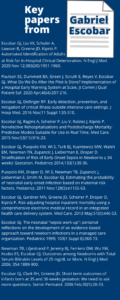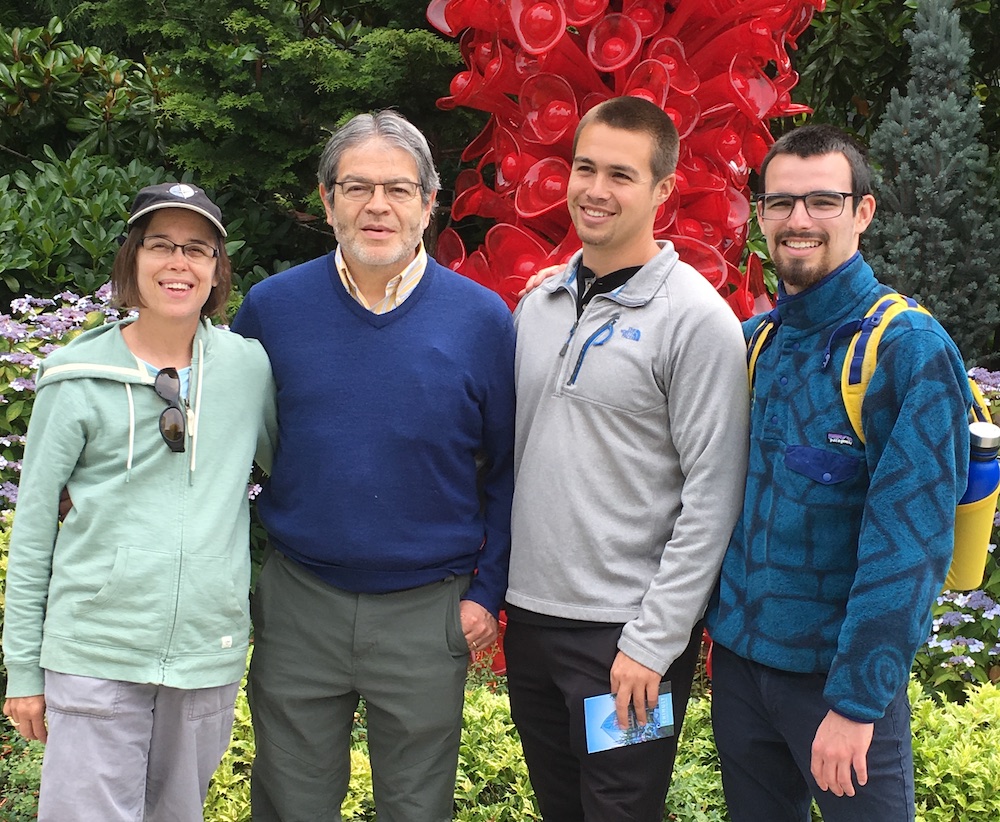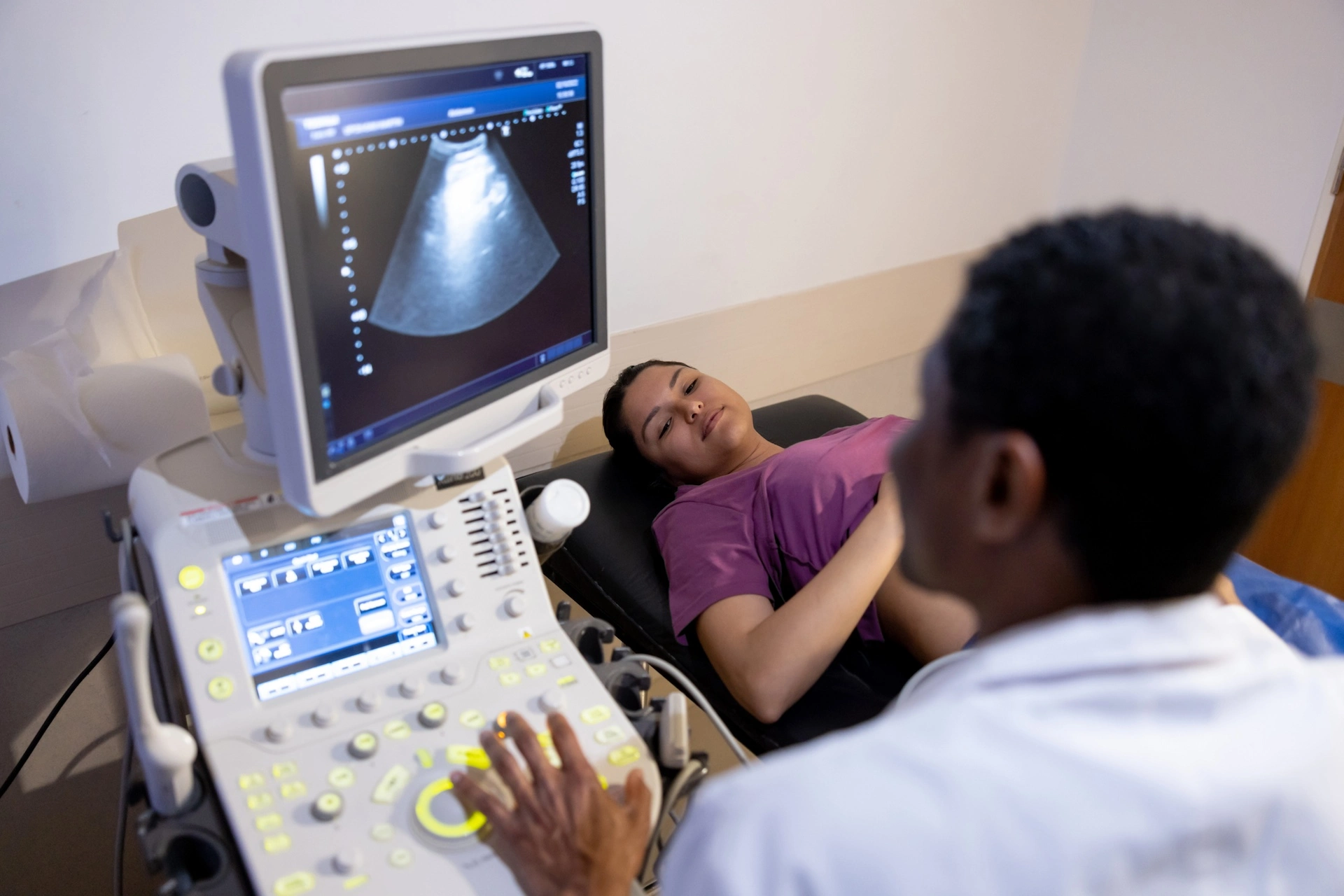Kaiser Permanente’s Gabriel Escobar used the newest analytical techniques to support clinical decisionmaking
Working night shifts in the neonatal intensive care unit (NICU) of a Kaiser Permanente hospital in 1985 set the tone for the next 35 years of health services research for Gabriel Escobar, MD. He noticed the need for better evidence to guide the care of babies suspected of having bacterial infection. He wondered why infants were being universally treated with 3 days of antibiotics to avoid sepsis, even if they were at low risk of infection.
This curiosity led Escobar to take an investigator position at the Kaiser Permanente Division of Research (DOR). In one of his first projects, he analyzed thousands of neonates’ charts by hand to look for patterns, using these data as a starting point for a series of projects that eventually led to the development of a simple calculator to help doctors determine which babies actually needed treatment. “Of all the work I’ve done in my career,” says Escobar, “this has to be the most impactful, where across our entire system, we decreased the use of systemic antibiotics in term newborns by 50%. And it is now used worldwide.”

Escobar retires in December as a research scientist with DOR and as regional director for hospital operations research for Kaiser Permanente Northern California (KPNC). He leaves behind the DOR Perinatal Research Unit, taken over by his mentee, DOR Research Scientist Michael Kuzniewicz, MD. And he’s handed over direction of the Systems Research Initiative (a research program on hospital outcomes and informatics) to another mentee, Vincent Liu, MD, MS, who continues their work of using sophisticated analytical techniques to improve hospital care.
Escobar’s most important legacy is establishing a precedent for close integration between researchers and regional operational leaders. He leaves several important risk scores that help clinicians: along with the neonatal sepsis score and the Transitions Support Level score, which has decreased rehospitalizations in adults, he also led the development of several predictive models to identify hospitalized patients at risk of decline, and those models power KPNC’s widely admired Advance Alert Monitor system.
Escobar was born in Peru and his family moved to Pennsylvania when he was 11 years old. He attended Pennsylvania State University as an undergraduate and Yale University for medical school.
Escobar answers our questions about his work and pending retirement.
Why did you choose pediatrics as a specialty?
I like babies and small children, so that’s why I went into pediatrics. When I finished my pediatrics residency at the University of California, San Francisco, I was already somewhat interested in newborn issues. In the Robert Wood Johnson Clinical Scholars fellowship program at Stanford University, I studied the political history of neonatal intensive care in the United States. I was exposed to the work of one of the pioneers of neonatology, William Silverman, who had written several papers that traced the expansion of the field.
One important factor was that, after World War II, Plexiglas – which was used for bombers’ windows and turrets – made excellent material for incubators to keep preemies warm. For the first time, many clinicians could actually see preemies in these Plexiglas incubators, and that led to substantial expansion in studies of premature infants. Dr. Silverman, a strong advocate for randomized trials, taught me a lot about the unintended consequences of wrong inference in medicine.
How did your early years in the NICU influence your research career?
When I joined Kaiser Permanente as a staff physician, I was one of the guys who volunteered to work nights, which meant covering either the NICU or emergency admissions to the pediatric ward. I continued doing 2 or 3 hospital overnights per month for most of my time at DOR.
From the beginning, I saw how miserable it was in the hospital for babies and their families, and so my work became aimed at how we can keep kids out of the hospital altogether. This was the same concern that led to the Advance Alert Monitor – I was interested in keeping people out of the ICU.
How did your ongoing clinical work inform your research?
For the first phase of my career, my research was totally linked to the clinical experiences I was having in the NICU and pediatric ward. The predictive analytics work we do lacks meaning if it isn’t useful to clinicians. That is something I learned early on, that our research has to have practical application at the bedside, has to take the practicalities of workflow into account.
In the future I see our analytics work evolving beyond building models that predict likelihood of a particular patient outcome. We need to be examining process – what clinicians, nurses, clinical pharmacists, and even administrators are doing – to learn how that affects patients. This is an area for advanced analytics such as artificial neural networks, a type of machine learning that mimics the connections in the human brain.

How has research at DOR changed over the years?
One big change has been the professionalization of health care services research. Compared with my education, the level of sophistication young researchers get during their training now is just staggering, in part because there have been huge advances in epidemiology and statistics. And the transition to evidence-based medicine has meant that clinicians are much more likely to accept what the evidence shows, to let it influence the care they deliver.
The other big change is the emergence of DOR from being something of a curiosity within Kaiser Permanente to being really accepted as an essential part of the health care delivery system. When I came to DOR we were a small epidemiology shop with about 80 people, and we’re now a big shop with close to 700 people. And our impact on the organization is huge. Our senior leadership turns to us to provide advice on the questions that keep them up at night, and they respect our answers.
What advice would you give younger investigators?
Be aware not just of what’s going on in your own research field. Pay attention to what is happening outside of DOR and outside of this institution. I also suggest treasuring the clinicians and administrators who value and support your work. In many cases they make it possible to move forward. And put some effort into communicating what you do, particularly to people who aren’t as familiar with statistical methods. It’s particularly important for front-line clinicians to understand and value what we do.

And remember that at DOR we’re very lucky to be working in one of the places where you can do cutting-edge, denominator-based research that affects health care in near real-time, as opposed to just generating an equation buried in some paper.
What do you think you’ll do in retirement?
I have a lot of interests outside of work that keep me busy. I’m interested in history and philosophy – specifically, philosophy of mind, which interfaces with cognitive neuroscience and phenomenology. I hike and swim. I also like listening to the blues and – much to the consternation of my family – very sentimental country music. But I expect my philosophy pursuits to be central – this year, in addition to my usual readings in philosophy and cognitive neuroscience, my project is to read all of Plato. Next year will be Aristotle.





This Post Has 0 Comments